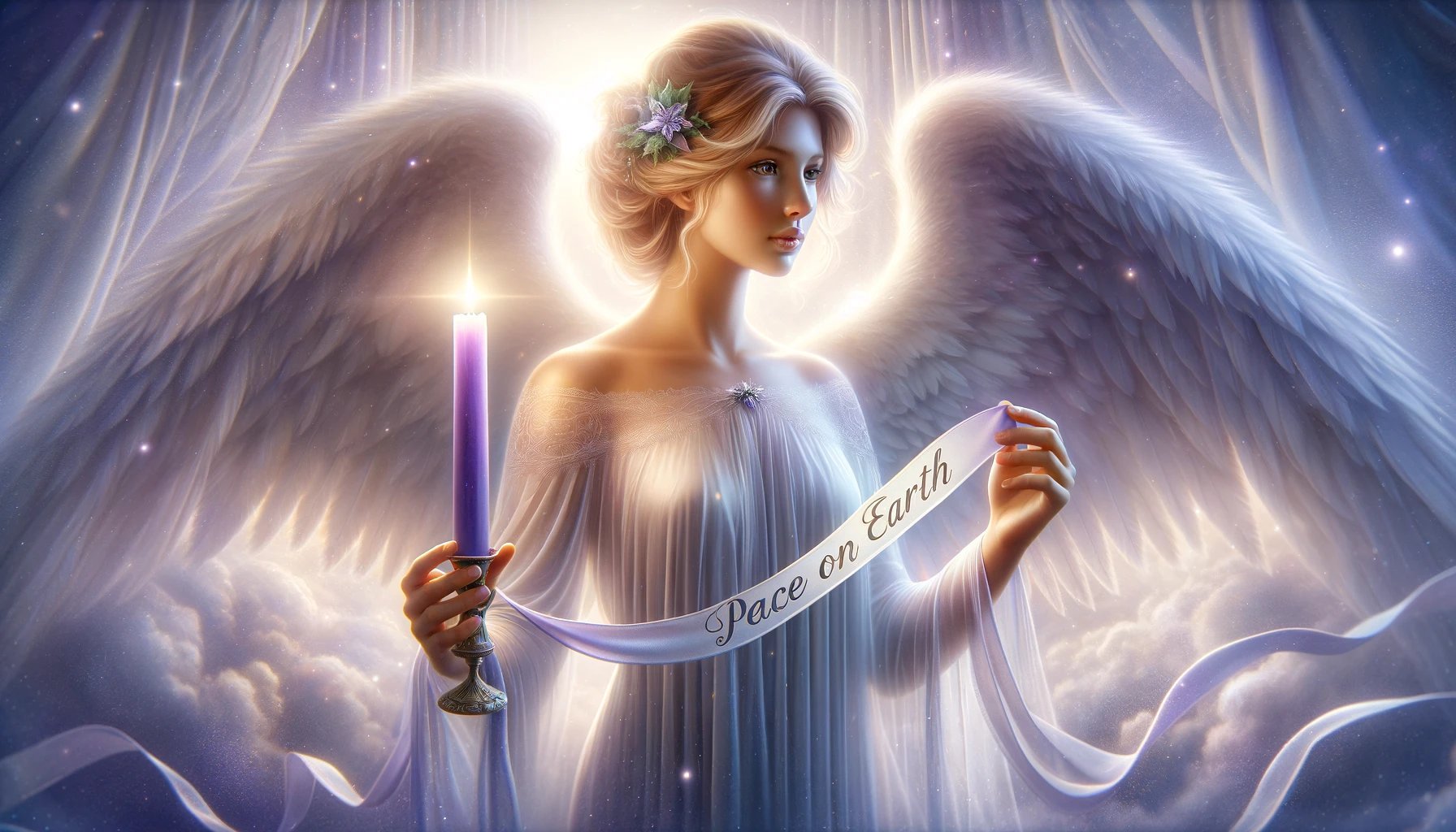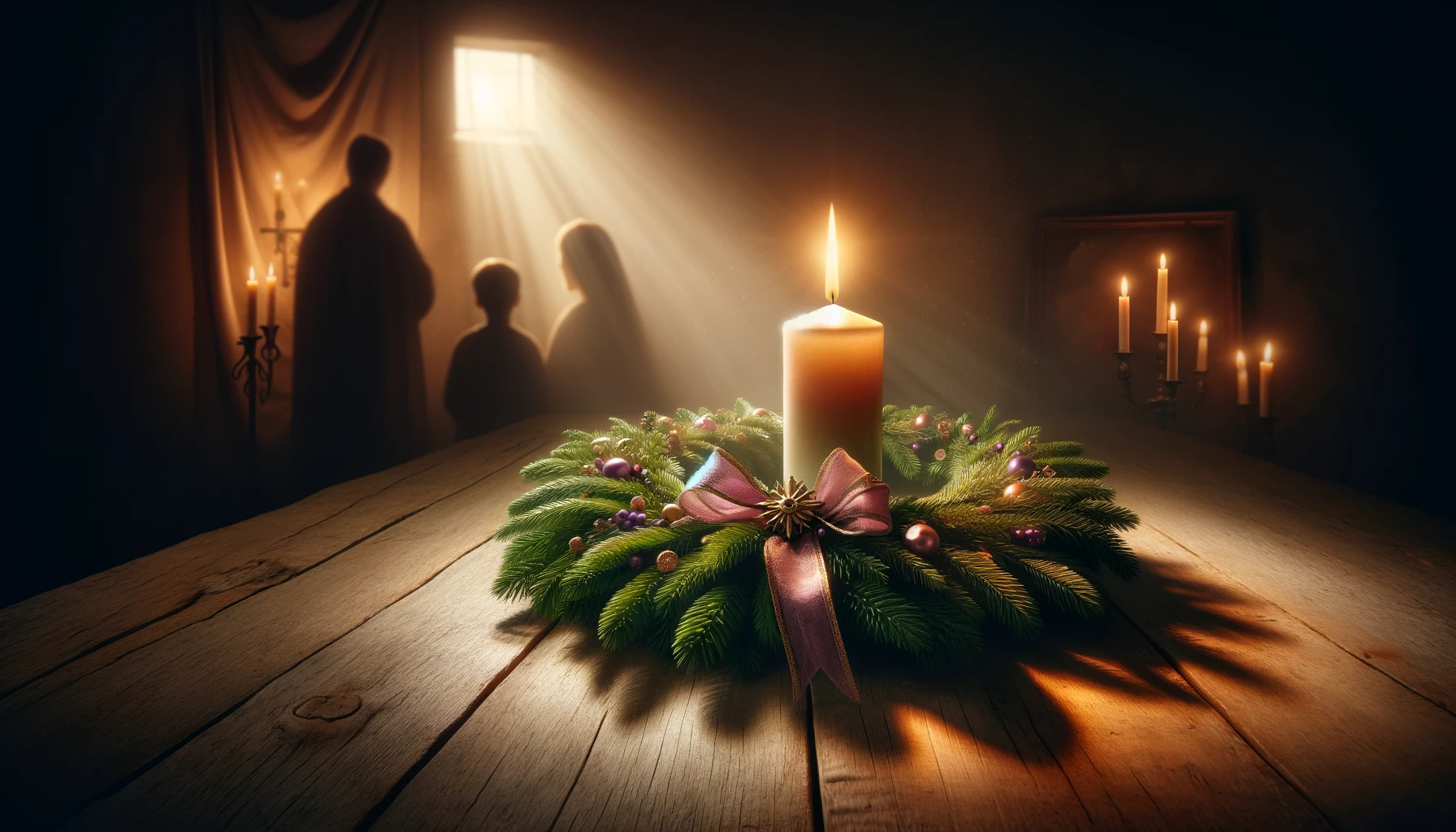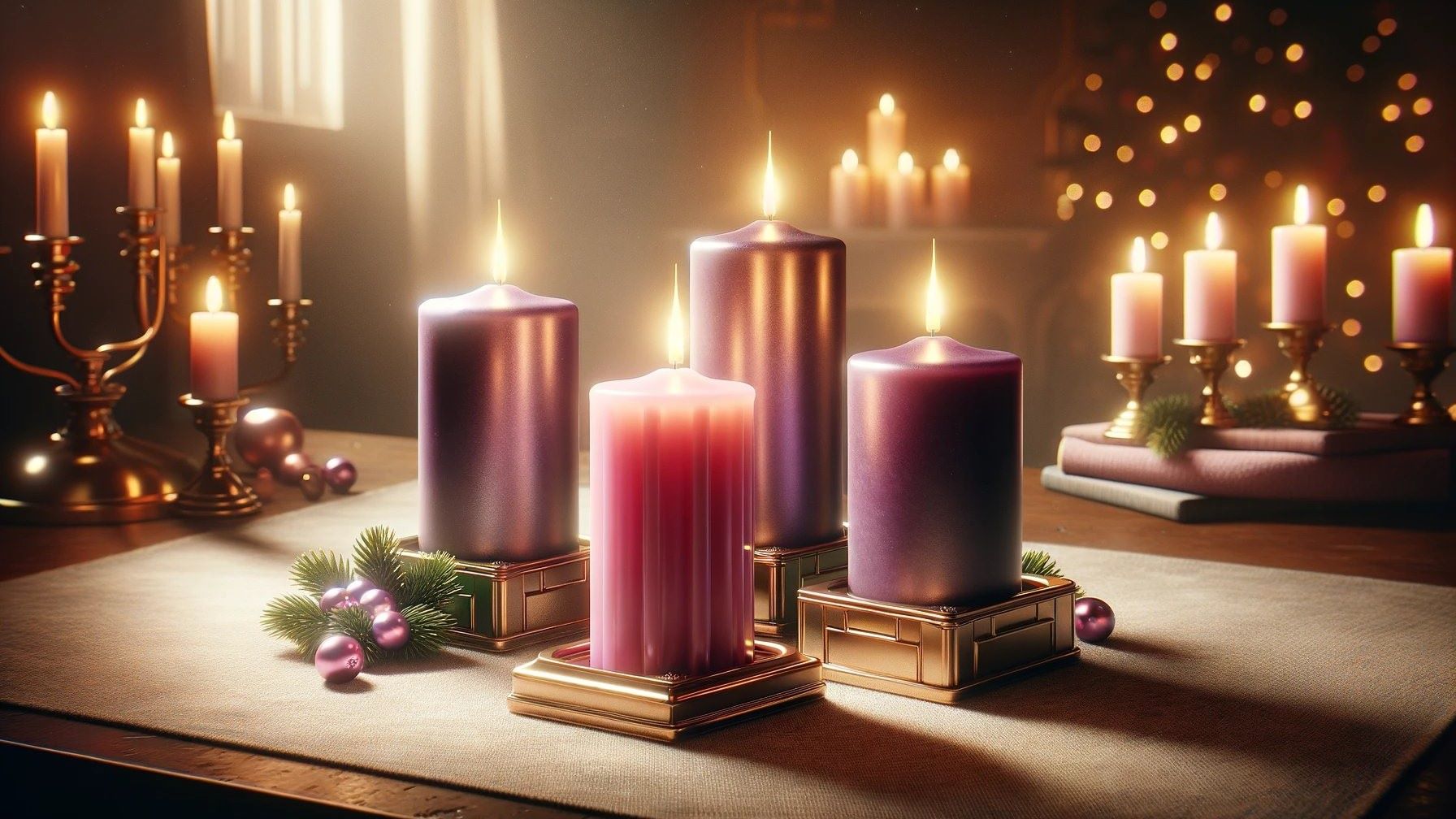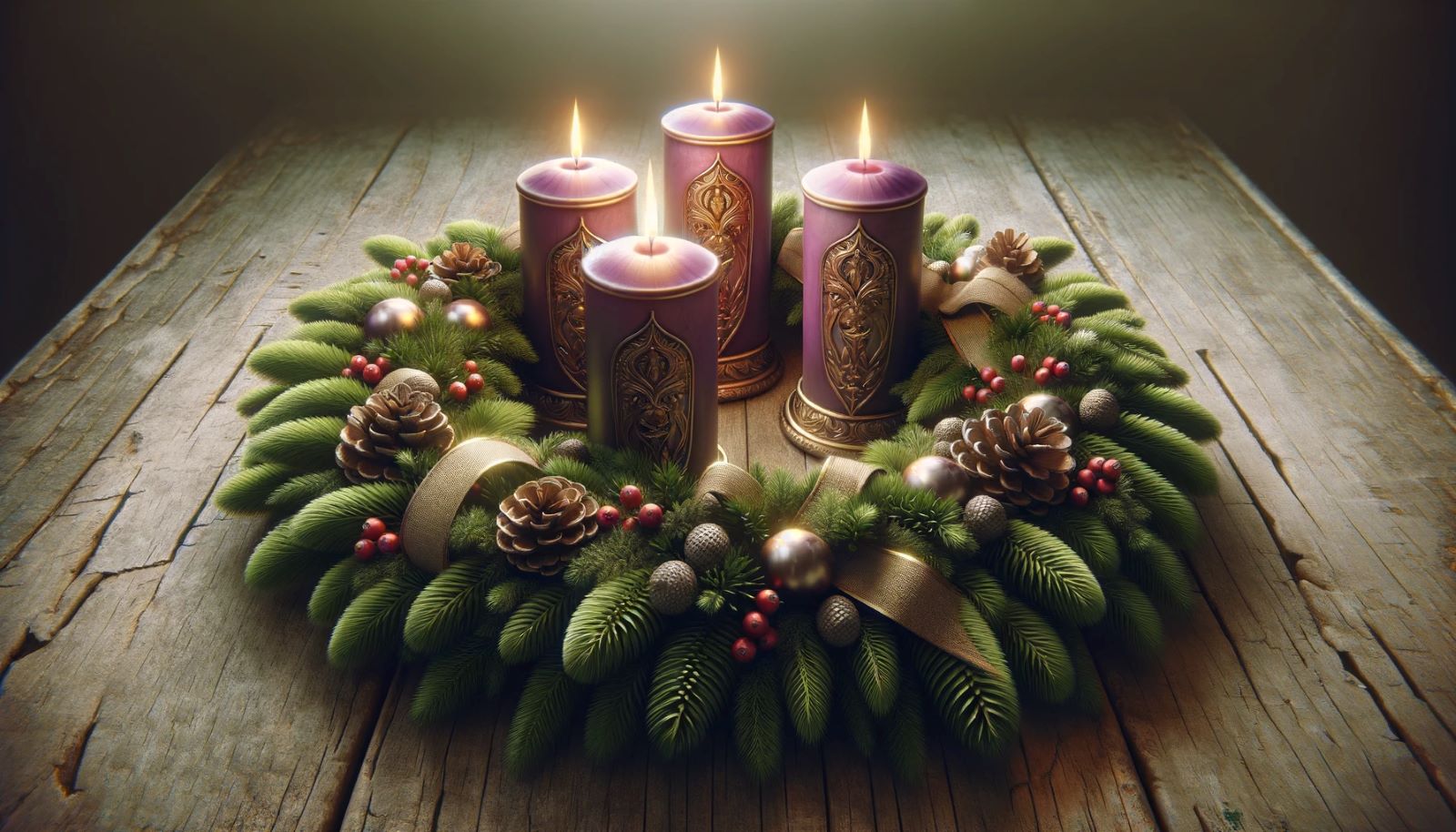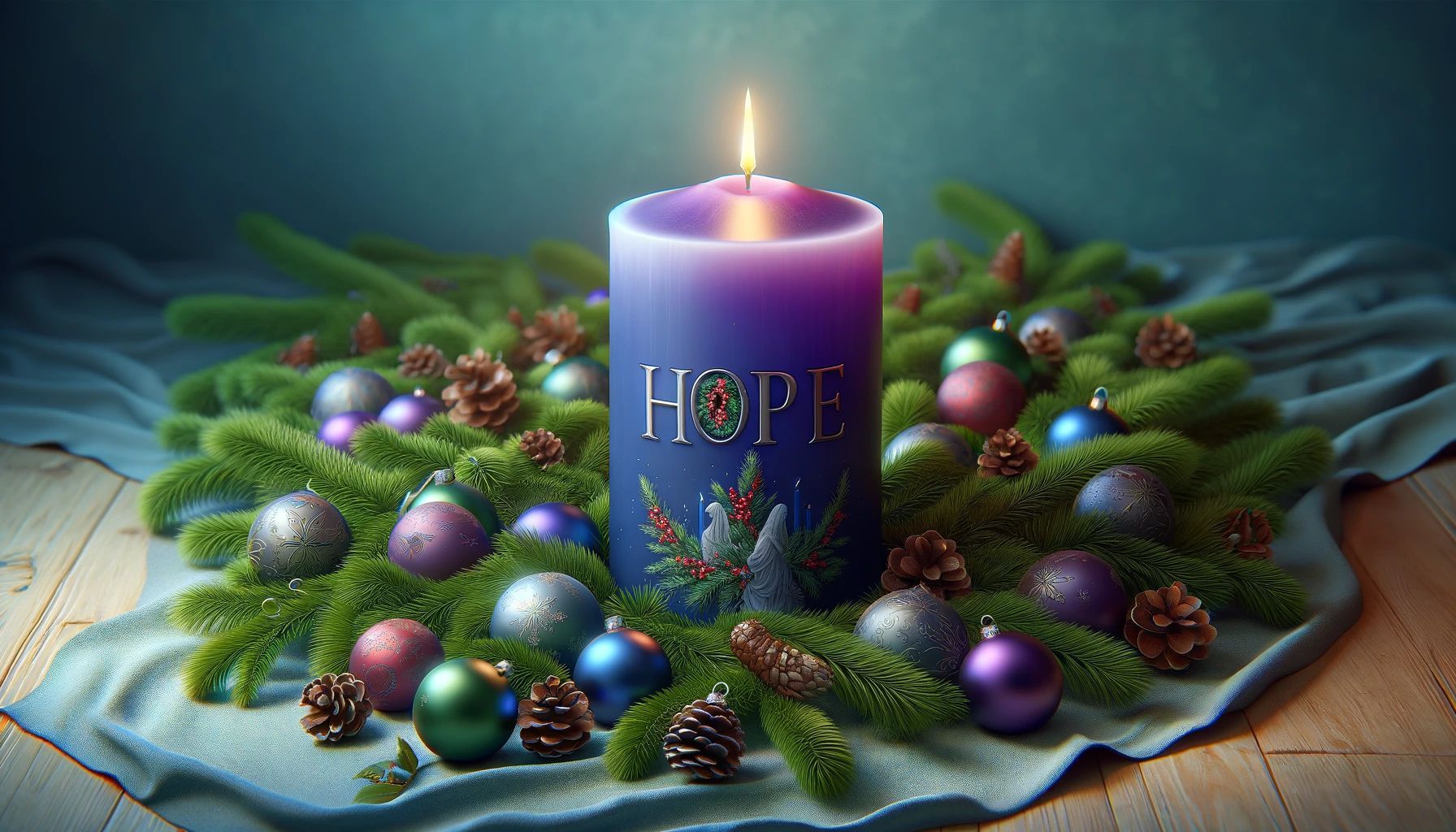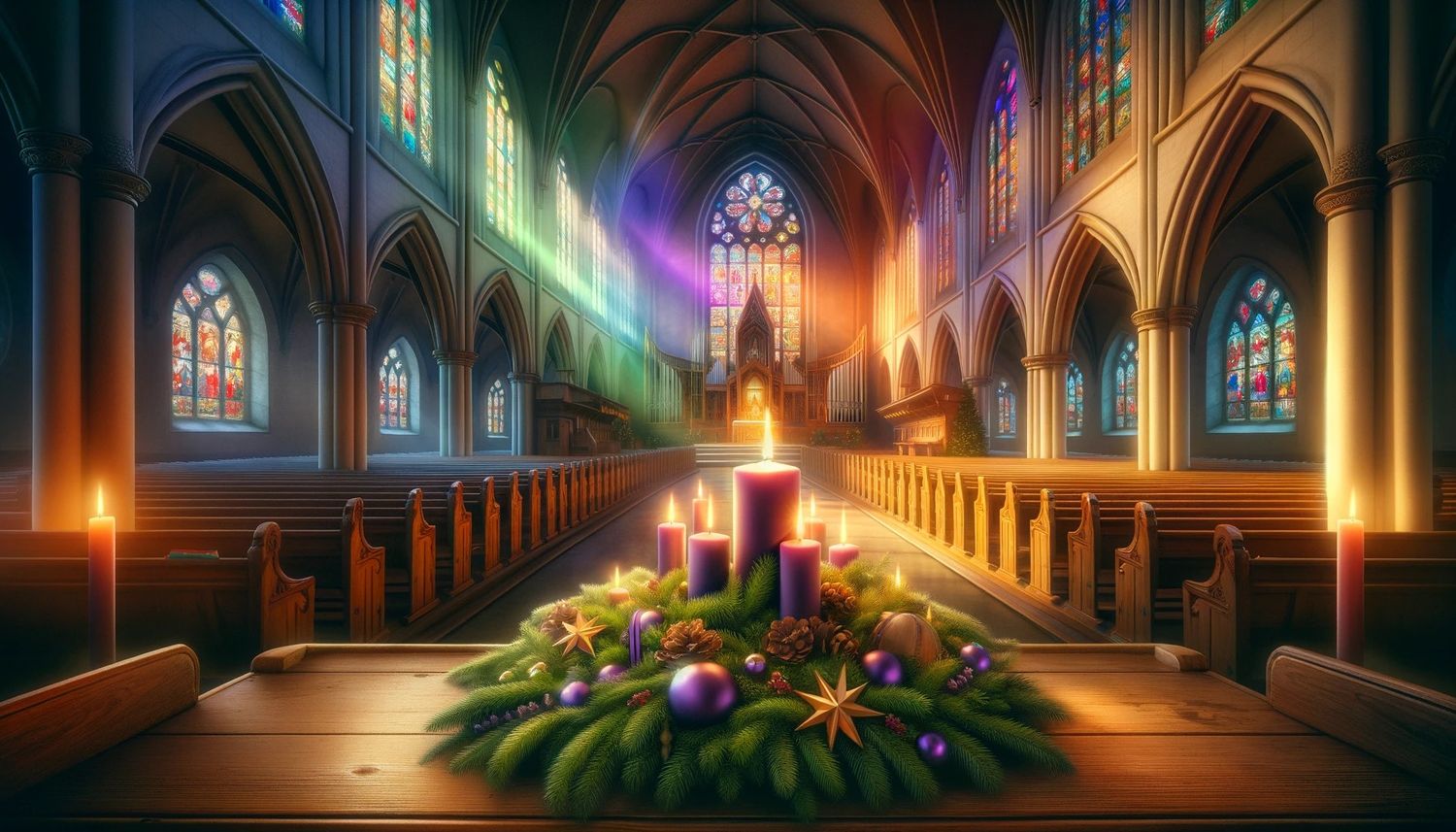Home>Special Themes>What Do The 5 Candles Of Advent Represent?
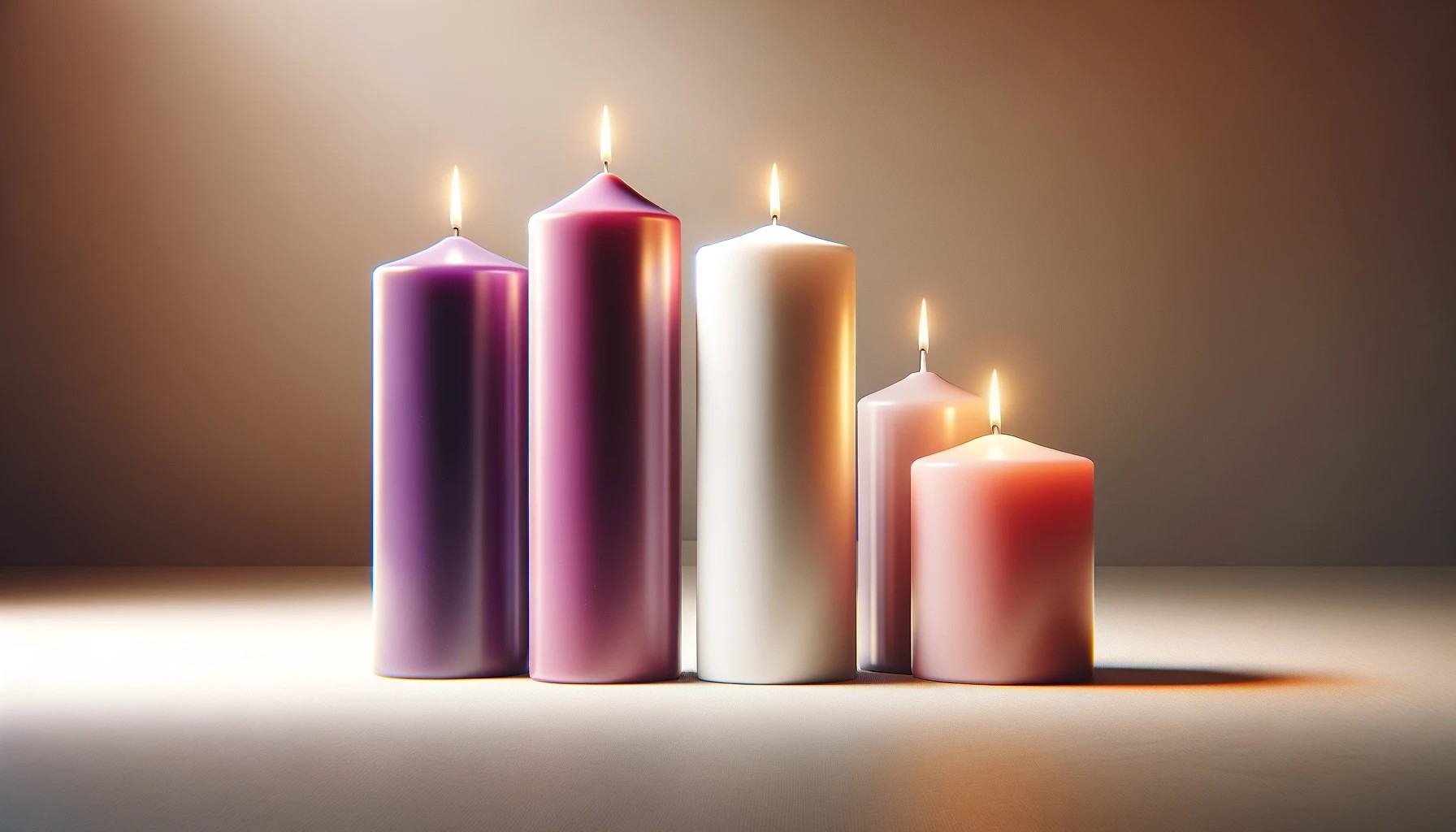

Special Themes
What Do The 5 Candles Of Advent Represent?
Published: February 13, 2024
Ericka Andersen, an editor at Christian.net, expertly merges digital strategy with content creation, focusing on faith and societal issues. Her communication skills enhance the platform's engaging narratives, fostering meaningful dialogue on belief's impact on society.
Discover the significance of the 5 candles of Advent and their representation of hope, love, joy, peace, and the birth of Jesus. Explore the special themes of this cherished tradition.
(Many of the links in this article redirect to a specific reviewed product. Your purchase of these products through affiliate links helps to generate commission for Christian.net, at no extra cost. Learn more)
Table of Contents
Introduction
The Advent season, which marks the beginning of the Christian liturgical year, is a time of joyful anticipation and spiritual preparation for the celebration of the birth of Jesus Christ. It is observed in various Christian denominations, including Catholic, Protestant, and Orthodox traditions. One of the most symbolic and visually striking aspects of Advent is the lighting of the Advent wreath, which consists of a circular arrangement of evergreen branches with five candles. Each candle represents a different aspect of the spiritual journey leading up to the Nativity of Christ.
As we delve into the significance of each candle, it's important to recognize the profound symbolism and spiritual depth embedded in this timeless tradition. The lighting of the candles not only serves as a visual reminder of the approaching Christmas celebration but also invites believers to reflect on the deeper meanings associated with each candle. From the flickering flame of hope to the radiant glow of love, the Advent candles convey a powerful message of faith, unity, and the enduring light of Christ in the world.
Throughout this exploration, we will uncover the rich symbolism behind each candle, shedding light on the profound spiritual themes of hope, peace, joy, love, and the ultimate fulfillment found in the birth of Jesus Christ. Let us embark on this illuminating journey through the Advent candles, delving into the timeless significance they hold for believers around the world.
Read more: What Do Advent Wreath Candles Represent
The First Candle: Hope
The lighting of the first candle on the Advent wreath symbolizes hope, marking the beginning of the Advent season. As the flickering flame illuminates the darkness, it serves as a powerful reminder of the hope that Christ's birth brings to the world. This candle, often referred to as the "Prophet's Candle," represents the anticipation of the Messiah's coming, fulfilling the prophecies of the Old Testament.
In a world often fraught with uncertainty and challenges, the concept of hope holds profound significance. It serves as a beacon of light in times of darkness, a source of strength during adversity, and a guiding force that instills courage and resilience. The first candle of Advent encapsulates this profound sense of hope, reminding believers of the promise of salvation and the enduring presence of God's love.
The color of the first candle is typically purple, symbolizing penitence and preparation as believers embark on a period of introspection and spiritual readiness. The act of lighting the candle not only signifies the beginning of the Advent journey but also encourages individuals to reflect on the hope that Christ's birth brings into their lives.
As the flame of the first candle dances in the stillness of the Advent season, it invites believers to contemplate the timeless message of hope found in the Scriptures. It echoes the words of Isaiah 9:2, "The people walking in darkness have seen a great light; on those living in the land of deep darkness a light has dawned." This verse encapsulates the essence of hope, portraying the profound transformation brought about by the arrival of the long-awaited Messiah.
Moreover, the first candle of hope sets the tone for the subsequent candles, laying a foundation of eager expectation and spiritual renewal. It serves as a poignant reminder that, amidst the challenges and trials of life, hope remains steadfast, anchoring believers in the promise of God's unfailing love and redemptive power.
In essence, the first candle of Advent kindles a flame of hope in the hearts of believers, inspiring them to embrace the season with renewed optimism and a deep sense of anticipation. It beckons individuals to look beyond the present circumstances and fix their gaze on the promise of Emmanuel, "God with us," whose birth heralds a new dawn of hope for all humanity.
As the Advent season unfolds, the radiant glow of the first candle continues to illuminate the path, guiding believers towards the fulfillment of God's promises and the profound hope found in the birth of Jesus Christ.
The Second Candle: Peace
The lighting of the second candle on the Advent wreath signifies the theme of peace, offering a profound reflection on the tranquility and harmony brought by the birth of Jesus Christ. This candle, often referred to as the "Bethlehem Candle," embodies the timeless message of peace that resonates throughout the Christmas narrative.
As the flickering flame of the second candle illuminates the Advent season, it serves as a poignant reminder of the transformative power of peace in a world often marred by conflict, discord, and unrest. The color of the second candle is traditionally purple, symbolizing the anticipation and preparation for the arrival of the Prince of Peace, whose birth heralds a new era of reconciliation and spiritual wholeness.
The concept of peace holds deep significance within the Christian faith, encapsulating the divine promise of reconciliation and the restoration of brokenness. It reflects the profound yearning for harmony and unity, both in the human heart and in the broader tapestry of humanity. The lighting of the second candle invites believers to contemplate the enduring message of peace proclaimed by the angels at the birth of Christ, echoing the words, "Glory to God in the highest, and on earth peace, goodwill toward men" (Luke 2:14).
Amidst the chaos and turmoil of the world, the second candle of peace beckons individuals to embrace the transformative power of Christ's birth, which brings about a profound sense of inner tranquility and reconciliation with God. It serves as a timeless reminder that true peace emanates from the presence of the Prince of Peace, whose coming embodies the fulfillment of ancient prophecies and the dawning of a new era of spiritual restoration.
Furthermore, the symbolism of the second candle extends beyond personal peace to encompass the broader vision of global harmony and reconciliation. It serves as a call to action for believers to become ambassadors of peace, actively contributing to the healing of divisions and the promotion of understanding and compassion within their communities and beyond.
As the Advent season unfolds, the radiant glow of the second candle continues to illuminate the path, guiding believers towards a deeper understanding of the transformative power of peace found in the birth of Jesus Christ. It inspires individuals to embody the spirit of reconciliation and to actively seek avenues for fostering peace in their lives and the world around them.
In essence, the second candle of Advent serves as a timeless symbol of the enduring peace that emanates from the birth of Christ, inviting believers to embrace the transformative power of reconciliation and to become beacons of peace in a world yearning for harmony and healing.
The Third Candle: Joy
The lighting of the third candle on the Advent wreath heralds the theme of joy, infusing the season with a profound sense of exuberance and celebration. This candle, often referred to as the "Shepherd's Candle," embodies the timeless message of joy that permeates the Christmas narrative and resonates deeply within the hearts of believers.
As the flickering flame of the third candle illuminates the Advent season, it serves as a poignant reminder of the transformative power of joy in a world often overshadowed by challenges and uncertainties. The color of the third candle is traditionally rose or pink, symbolizing the joy and anticipation that accompany the imminent arrival of the long-awaited Messiah.
The concept of joy holds deep significance within the Christian faith, encapsulating the profound sense of gladness and spiritual fulfillment that springs from the realization of God's redemptive plan. It reflects the profound rejoicing that emanates from the promise of salvation and the abiding presence of God's love. The lighting of the third candle invites believers to embrace the enduring message of joy proclaimed by the angels at the birth of Christ, echoing the words, "Do not be afraid. I bring you good news that will cause great joy for all the people" (Luke 2:10).
Amidst the complexities and trials of life, the third candle of joy beckons individuals to embrace the transformative power of Christ's birth, which brings about a profound sense of inner gladness and spiritual renewal. It serves as a timeless reminder that true joy emanates from the presence of the Savior, whose coming embodies the fulfillment of ancient promises and the dawning of a new era of spiritual abundance.
Furthermore, the symbolism of the third candle extends beyond personal joy to encompass the broader vision of communal celebration and shared gladness. It serves as a call to action for believers to spread joy and goodwill, actively contributing to the uplifting of spirits and the fostering of a culture of positivity and hope within their communities and beyond.
As the Advent season unfolds, the radiant glow of the third candle continues to illuminate the path, guiding believers towards a deeper understanding of the transformative power of joy found in the birth of Jesus Christ. It inspires individuals to embody the spirit of celebration and to actively seek avenues for sharing joy in their lives and the world around them.
In essence, the third candle of Advent serves as a timeless symbol of the enduring joy that emanates from the birth of Christ, inviting believers to embrace the transformative power of gladness and to become ambassadors of joy in a world yearning for spiritual fulfillment and celebration.
The Fourth Candle: Love
The lighting of the fourth candle on the Advent wreath signifies the profound theme of love, infusing the season with a transformative message of compassion, empathy, and divine affection. This candle, often referred to as the "Angel's Candle," embodies the timeless essence of love that permeates the Christmas narrative and resonates deeply within the hearts of believers.
As the flickering flame of the fourth candle illuminates the Advent season, it serves as a poignant reminder of the enduring power of love in a world often marked by division, discord, and strife. The color of the fourth candle is traditionally purple, symbolizing the anticipation and preparation for the arrival of the embodiment of divine love, whose birth heralds a new era of compassion and spiritual unity.
The concept of love holds profound significance within the Christian faith, encapsulating the divine essence of selflessness, forgiveness, and unconditional grace. It reflects the profound depth of God's love for humanity, culminating in the gift of His Son as the ultimate expression of divine affection. The lighting of the fourth candle invites believers to embrace the enduring message of love proclaimed by the Scriptures, echoing the words of John 3:16, "For God so loved the world that he gave his one and only Son, that whoever believes in him shall not perish but have eternal life."
Amidst the complexities and challenges of life, the fourth candle of love beckons individuals to embrace the transformative power of Christ's birth, which brings about a profound sense of inner warmth and spiritual renewal. It serves as a timeless reminder that true love emanates from the presence of the Redeemer, whose coming embodies the fulfillment of ancient promises and the dawning of a new era of spiritual abundance.
Furthermore, the symbolism of the fourth candle extends beyond personal affection to encompass the broader vision of communal unity and shared empathy. It serves as a call to action for believers to embody love in its purest form, actively contributing to the fostering of compassion, forgiveness, and understanding within their communities and beyond.
As the Advent season unfolds, the radiant glow of the fourth candle continues to illuminate the path, guiding believers towards a deeper understanding of the transformative power of love found in the birth of Jesus Christ. It inspires individuals to embody the spirit of selfless love and to actively seek avenues for sharing compassion and empathy in their lives and the world around them.
In essence, the fourth candle of Advent serves as a timeless symbol of the enduring love that emanates from the birth of Christ, inviting believers to embrace the transformative power of divine affection and to become ambassadors of love in a world yearning for spiritual unity and compassion.
Read more: What Do The Four Advent Candles Represent
The Fifth Candle: Christ
The lighting of the fifth candle on the Advent wreath represents the culmination of the Advent journey, as believers joyously celebrate the birth of Jesus Christ. This central candle, often referred to as the "Christ Candle," serves as the focal point of the Advent wreath, radiating a profound sense of reverence and awe as it symbolizes the embodiment of divine light and salvation.
As the flickering flame of the fifth candle illuminates the Advent season, it serves as a poignant reminder of the transformative power of Christ's birth, which heralds a new era of hope, peace, joy, and love. The color of the Christ Candle is traditionally white, symbolizing purity, holiness, and the radiant presence of the Savior whose birth brings forth the redemption and renewal of humanity.
The symbolism of the Christ Candle extends beyond the historical narrative of the Nativity to encompass the timeless message of Christ's enduring presence in the lives of believers. It serves as a powerful symbol of the Incarnation, signifying the profound mystery of God taking on human form to dwell among His people. The lighting of the Christ Candle invites believers to contemplate the profound significance of Emmanuel, "God with us," whose arrival fulfills the ancient prophecies and inaugurates a new covenant of grace and salvation.
Amidst the jubilant celebrations and reverent reflections of the Advent season, the Christ Candle beckons individuals to embrace the transformative power of Christ's birth, which brings about a profound sense of spiritual renewal and redemption. It serves as a timeless reminder that the true essence of Christmas lies in the miraculous gift of God's Son, whose coming embodies the fulfillment of divine promises and the dawning of a new era of spiritual abundance.
Furthermore, the Christ Candle serves as a beacon of hope and inspiration, guiding believers to embrace the profound significance of Christ's presence in their lives. It symbolizes the enduring light of Christ, which dispels the darkness of despair, sin, and separation, offering the promise of eternal life and reconciliation with God.
As the Advent season culminates in the radiant glow of the Christ Candle, believers are invited to immerse themselves in the profound mystery of the Incarnation, embracing the transformative power of Christ's birth and embodying the spirit of reverence, gratitude, and devotion. The Christ Candle stands as a timeless symbol of the enduring light and love that emanate from the birth of Jesus Christ, inviting believers to embrace the transformative power of His presence and to become bearers of His light in a world yearning for spiritual fulfillment and divine grace.



